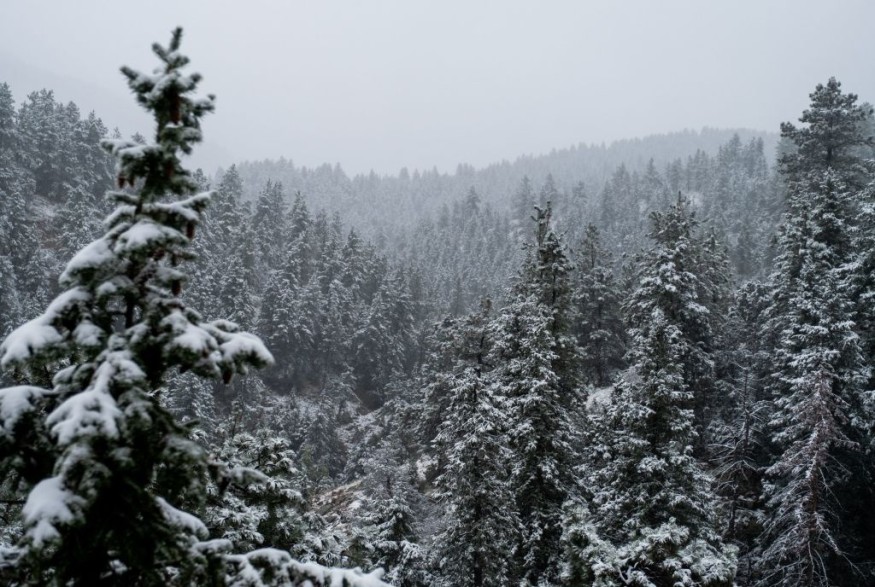Snowy weather will continue to blanket the Rocky Mountains with thick snow and cold temperatures in the remainder of the current week, according to weather forecasters, who also predicted the cold weather can cause travel chaos for the upcoming Thanksgiving national holiday next week.
The short-range forecast suggested travelers to and from the Rockies could face harsh elements from a cold front.
The city of Denver, Colorado, is only of the many locations across the region to face the disruptive impact of heavy snow as the week progresses.
In addition, the snowy conditions are reportedly only the tip of the ice berg as cold air from the Arctic and winter precipitation to either freezing or sub-freezing temperatures.
These weather hazards could affect both ground and air travel, including commercial flights.
The latest weather developments in the Western United States region comes as the Great Lakes and Northeast US regions are experiencing a potentially historic lake-effect snow event, bringing substantial snowfall, winterlike temperatures, and ongoing freeze alerts for millions of Americans.
The snowy weather forecast only shows that the other side of the country is still vulnerable to cold weather.
Potential Thanksgiving Travel Chaos

Millions of Americans will travel and celebrate with their loved ones once again for Thanksgiving on Thursday, November 24.
However, US meteorologists have warned that the arctic cold and winter precipitation could disrupt road traffic movement and even domestic flights due to poor visibility caused by heavy snowfall.
AccuWeather meteorologists stated the wintry weather will soon hit parts of the Intermountain West, where the cold air mass and precipitation would start accumulating to give travelers a hard time to their Thanksgiving destinations.
Under these conditions, travel chaos such as overcrowded streets, train stations, and even airports could either result in the delay or cancelation of trips.
Ground traffic and aviation authorities could also impose restrictions mitigate or prevent risks related to whiteout conditions.
AccuWeather Meteorologist Brandon Buckingham explained a cold front moving southward along the spine of the Rockies is expected to thick snow to the Front Range and High Plains areas from Wednesday evening to Friday morning, November 16 to November 18.
Also Read: Cooler Winter Weather Forecasted for a Dozen US States; Increased Energy Consumption Expected
Arctic Cold Front
Arctic cold fronts are capable of producing dramatic temperature changes and they can be accompanied by heavy snow squalls or fuel lake-effect snow events.
The Weather Channel described these fronts as "king of the meteorological world" when it comes to dropping temperatures during their passage, adding that they sweep through the Lower 48 states each year.
In general, the first set of arctic blasts occurs in the US in its winter season starting December.
During an Arctic cold front, below are the following impacts of the phenomena to existing temperatures and other weather events present in the area
- Temperatures can significantly drop within 24 hours.
- Temperatures can even plummet in just a matter of minutes.
- A few miles of areas affected by the cold front can make a large temperature change.
- Snow squalls or heavy bursts of snow can cause reduced visibility and even travel-related accidents.
© 2025 NatureWorldNews.com All rights reserved. Do not reproduce without permission.





